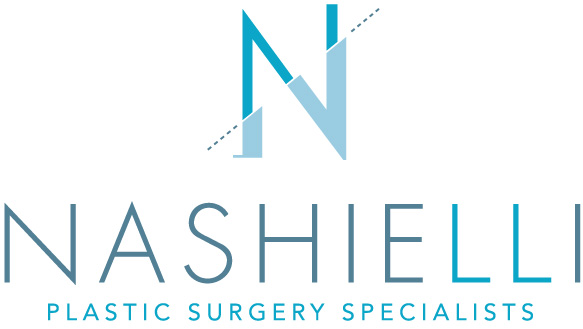CALF IMPLANT SURGERY
The recommended surgery to give ideal volume and have perfect legs.

The calves have always played an important role in bodily expression and sensuality. The calf implant surgery is designed to add volume in the area of the calf muscles in the legs, thus enhancing the form and shape in this area for either men or women. This procedure will simulate the natural development of the muscles of this part of the leg (calf muscles) using silicone implants that are soft but very durable which ultimately give a very natural look. The calf implant surgery is less common than breast implants, perhaps because the population is generally unaware that there is the option to increase the volume of the calves. This is a quick and simple surgery that can be combined with other procedures.
FACE
FAQS
What are the steps to surgery?
During the consultation, the surgeon will evaluate your overall health as well as do an overall assessment of the legs. Your expectations will be discussed and the surgeon will make it clear what you can and cannot accomplish with calf implants. Calf implants are usually indicated in patients with thin legs due to a disease, injury, accident or genetics. It is also suitable for people who despite doing lots of exercise, are unable to increase the volume of their calves to their satisfaction. There are several types of calf implants available and you will discuss with the surgeon and decide together which will be best for your situation.
The second step is to have a medical examination to determine your health status. These examinations include lab work and a preoperative cardiac evaluation. The third step is the surgeon will take pictures to evaluate the areas of concern and further will advise on the procedures recommended, details about those procedures including incisions and where they will be located, risks of surgery, pre-operative and post-operative care, as well as recovery time. Following this discussion, we will schedule a surgery date and you will be given the necessary information to prepare.
How long will my recovery take?
Typically this surgery can be performed on outpatient basis, that is, you may complete your surgery in the morning and be discharged in the afternoon. Alternatively, if you prefer, you may choose to spend one night in the hospital. The next day you can start to walk, using compression stockings to help with any inflammation, swelling or edema. At first, you may only walk with no additional exercise for the first 2 to 4 weeks. Little by little you may increase the mobility of the legs over the next several weeks based on the advice of your surgeon. After your surgeon gives their approval, you may return to your normal exercise routine. We will continue to monitor your progress throughout this time to keep track of your recovery.
Immediately after your surgery, you will notice the increase and improvement in the shape of your calf. However, it is important to remember there will be additional volume which is due to swelling. This swelling will decrease over the first three weeks following surgery. You will see your final result between 3 and 4 months after surgery. By eating a healthy diet and maintaining regular exercise, you will retain the new shape permanently.
How long will your procedure take and what type of anesthesia used?
In most cases, we will use light sedation in conjunction with an epidural block. However, in some cases general anesthesia may be indicated due to previously medical conditions. The actual surgery time is between 1 to 2 hours. But we have to take into account the time needed for all preparations prior to surgery, which is about one hour, as well as about 1 to 2 hrs in the recovery room before you are transferred to your private room. You may complete this surgery as an outpatient procedure if approved by your surgeon or you will stay in the hospital one night and the surgeon will do a follow up with you before leaving the hospital. In addition, your next follow up appointment will be scheduled.
What will my incisions look like?
The incisions for this surgery are placed in the crease of the leg behind the knee. The scar will be visible at first and will gradually fade over a 4-6 month time frame. The type of scar is also reflected by the experience of the surgeon performing the procedure. However, just as important is the daily wound care which you will be given precise direction in after your surgery. It is advisable to avoid exposure to sun for at least a couple of months as well as using some additional healing products. After several months, the scars should be virtually invisible.
What are the associated risk factors of liposuction?
Common risk factors are patients over 40 years, prolonged surgery, oral contraceptive use, smoking and obesity. Another risk factor with this surgery is if you have pre-existing varicose veins in your legs. It is very important to assess your health condition in advance and to analyze it with your doctor. The most common risks are seroma, hematoma and irregular positioning of the implant. Other risks that are rare include deep vein thrombosis and pulmonary embolism.
What do I have to do before my surgery?
- ONE MONTH BEFORE SURGERY
- ONE WEEK BEFORE SURGERY
- ONE DAY BEFORE SURGERY
- MORNING OF SURGERY
- AFTER YOUR SURGERY
Stop taking medicines such as Aspirin and Vitamin E.
If applicable, stop smoking completely.
Attend pre surgical consultation, including taking of photographs.
Complete blood tests and cardiac evaluation.
Receive post-operative indications.
Do not ingest any food or drink after the time advised by your surgeon.
Pack a bag with comfortable shoes and clothing, specifically something that zips or buttons.
Shower or bathe normally.
Do not use gel or any other product on the hair.
Do not use makeup, facial creams or body lotions.
Asegúrate de que hay alguien te lleve a casa
You will be given all medical garments and medicine which will include pain medication, anti-inflammatories and antibiotics.
It is important to have someone with you the first 24 to 48 hours as you may feel weak or sleepy and may require help getting out of bed, a light diet is best for one day after surgery. Any movements should be delicate and subtle, avoiding large efforts that may put major stress on your legs. You must use compression stockings which are placed immediately on completion of surgery. You must use these stockings night and day for two weeks, which may be removed to shower only. After two weeks, it will be evaluated if you need to continue wearing the compression stockings or not. It is important to a healthy diet, trying to avoid spicy foods, fatty or spicy foods, in order to avoid irritation of the stomach. Staying well hydrated is important and you will be taking antibiotics, analgesics and anti-inflammatory medications for a period of 7 to 10 days. Avoid being in hot or unventilated areas as this can increase swelling. Most patients experience muscle discomfort about 7 to 10 days after surgery so it is very important to take your medication on schedule.
